How Alastair Salvesen is applying science to dramatically increase wildlife on his farm
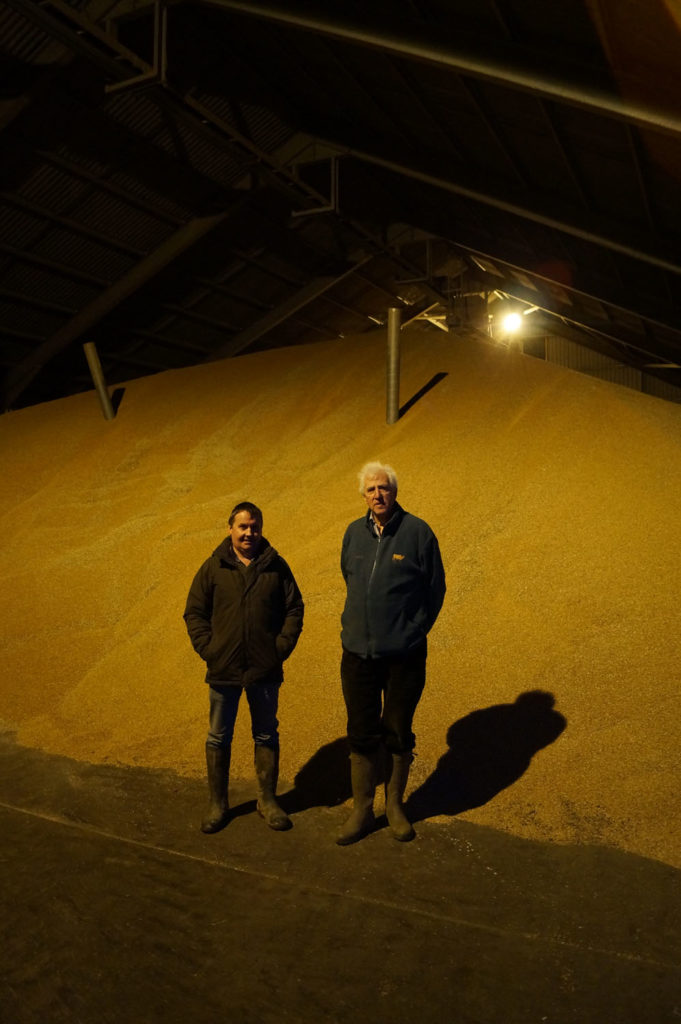
Alastair Salvesen’s Whitburgh Farms comprises 2,500 acres of mixed arable and beef overseen by farm grieve (manager) Jim Nichol. The pasture is concentrated at one end of the farm, along with sheds to house 180 Aberdeen Angus beef animals and 200 sheep. At the other is a high-tech bio-fuel grain storage and drying facility and in between a wide range of crops including oilseed rape, winter wheat, spring wheat, spring barley and winter barley. Some of the barley goes to Macallan malt whisky and part of the wheat goes to Grants of Girvan for blended.
Farm facts
- Location: Midlothian
- Type of farming: Mixed arable, beef and sheep
- Acreage: 2,500
- Amount in conservation: 7%
- Funding grants: Zero
In the past 10 years, Alastair has increased beneficial habitats to cover 7 percent of the land (175 acres) and has seen wild grey partridges (a species that has nationally declined by 95% since 1975) go from 0 to 400 birds according to autumn counts.
Alastair’s approach is forward-looking, embracing new technologies and finding novel solutions to the twin challenges of increasing biodiversity and farming profitably. Whitburgh Farms is a demonstration partner in the EU North Sea Interreg Region PARTRIDGE project led by the GWCT. This works with ten sites in five different countries to try to show how agri-environment schemes can be improved, using existing solutions that work for grey partridge, along with trialling new ideas.
One of the challenges is to achieve partridge recovery within the standard CAP Greening regulations. Under Greening, farmers have to take five percent of their land out of production as a condition of the EU Basic Payment Scheme. Whitburgh has managed to meet this target with hedges alongside uncropped eight-metre margins around every field.
The farm boasts an impressive 28 miles of hedgerows, which provide shelter from weather and predators. Alastair explained: “We keep the hedges in good shape. We never cut both sides in the same year and try to widen them at the base and let them go up a bit higher.”
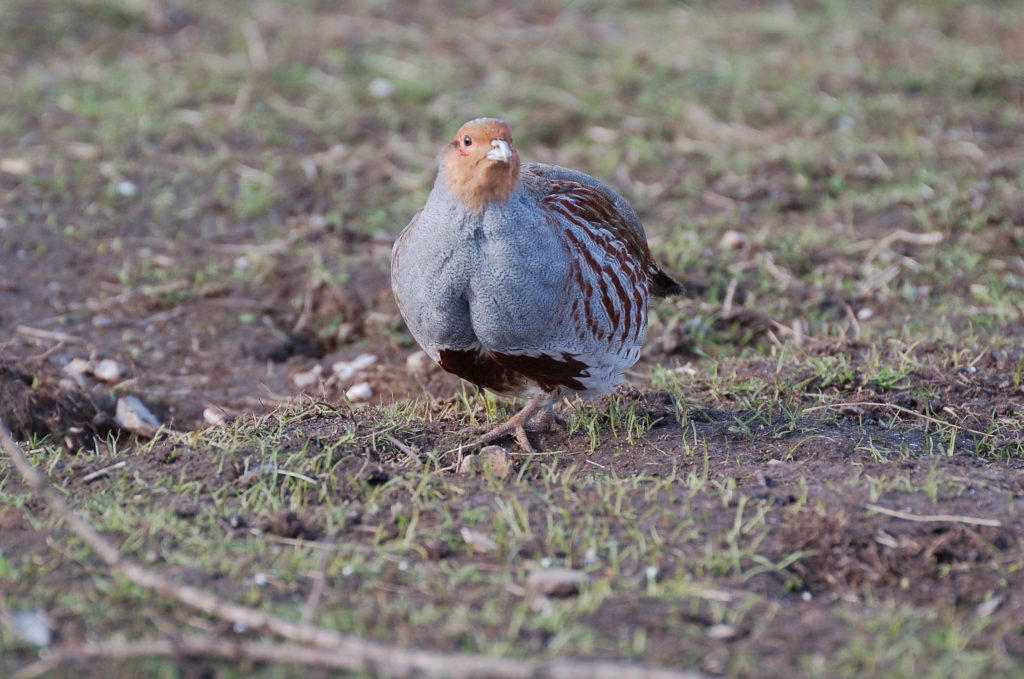
Either side of the hedge are three metres of grass, which offer nesting sites and next to that four metres of wild bird cover and one metre unplanted to allow birds to dust themselves. Working in partnership with Oakbank Seeds and Kings, the GWCT has succeeded in developing suitable cover crop mixes including wildflowers to produce insects for chicks, seed for food and broadleaves to protect from weather and predation. Results have been positive, but for Alastair other aspects of the greening and agri-environment prescriptions are impractical and counterproductive.
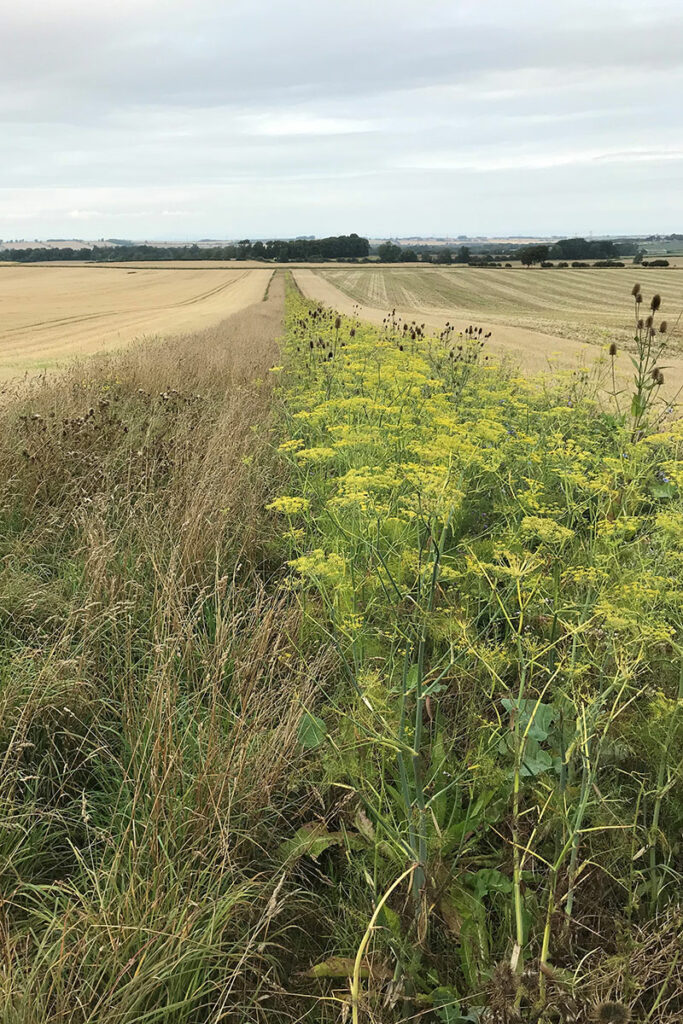
“We are trying to explain to the Scottish Government that not being allowed to spray the margins for thistles is very detrimental to the farming operation and makes you very unpopular with neighbouring farms. We had to abandon the five-year agri-environment scheme where you had to top the thistles instead of spraying, because, if you cut them in the breeding season, you risk killing the partridges and after that it is too late – the seed has spread on the wind. If we were allowed to spray early in the year, it wouldn’t do any damage to the other plants and would allow aphids to multiply for the birds. Spraying shouldn’t be forbidden; it’s a matter of when you do it.”
One of the principle challenges to making Greening work is the Scottish weather. Unlike the south of England, frost-free conditions can’t be guaranteed until 1 June, so most cover crop mixes have to go in late. This means trying to find mixes that last two or three years to provide cover all year round. The heavier rainfall also creates problems.
Alastair explained: “Because of the rain this year one field of straw was turned seven times. The headache we have is some of our crops ripen quite late and gaps in the weather are few and far between. It is important to avoid baling straw after dark as the young partridges may be roosting, but changing weather patterns could mean that this is the only way to keep abreast of the harvest and replanting programme.”
No longer being in the agri-environment scheme means the farm picking up more of the bill. Alastair said: “We get assistance under the greening system, but we recognise that it’s not going to cover the whole cost. I still believe it is possible to have successful conservation and profitable farming, but it’s far more marginal than I would like.”
He is convinced that it is only by gathering the evidence that these messages will be heard by the government’s agricultural departments and lead to new legislation. He said: “They will only listen to us because we are working with the GWCT, which has the scientific expertise.”
Alongside the farming operation, gamekeeping is an essential element. The pheasant shoot means Alastair can employ a full-time keeper, Graham Rankine, who puts out feed for the birds in winter and spring and controls all the generalist predators that can be legally managed. However, the partridges and other farmland birds are increasingly under attack from buzzards and sparrowhawks, both protected species, whose numbers have increased dramatically.
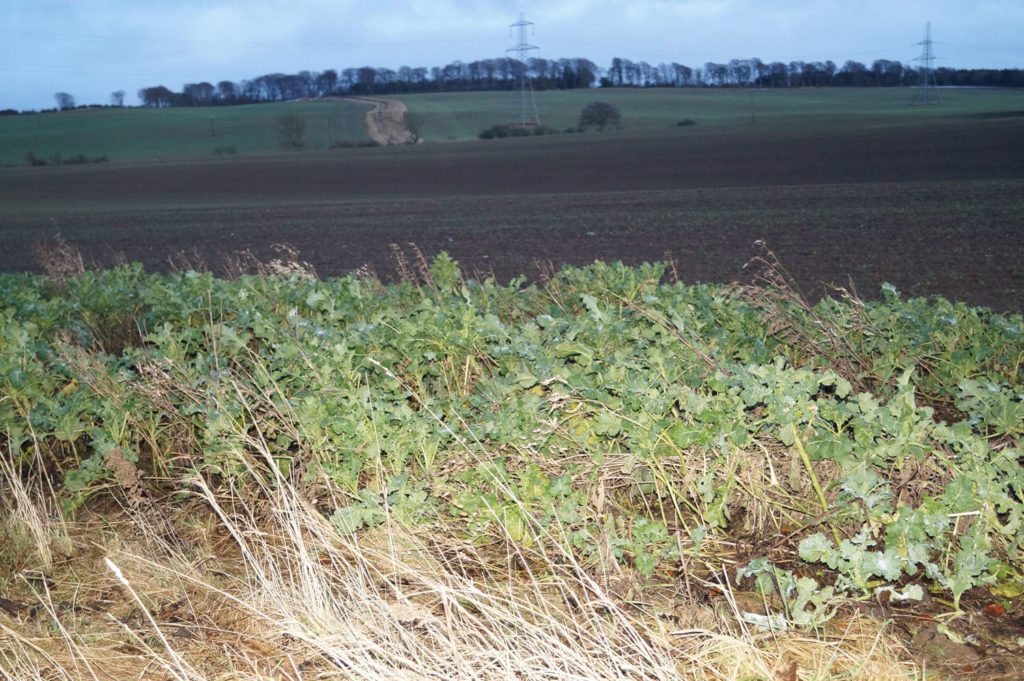
Part of the GWCT study at Whitburgh Farms project is to try to establish scientific evidence to determine whether raptor predation could threaten similar conservation projects across the country. Alastair explained: “We have up to 12 buzzard nests on the farm plus three nests nearby. According to published estimates, we therefore have more buzzards per hectare than anywhere else in Europe. We tagged several partridges and the average mortality rate from three years of tagging was one third lost to raptors, with several tags turning up in buzzards’ nests.”
Walkers are welcome at Whitburgh Farms as long as they stick to footpaths and keep dogs under close control, but there is an unintended consequence of the Right to Roam law, which could have catastrophic consequences for Scotland’s grey partridges. The legislation allows members of the public to walk anywhere on private property and encourages walkers to go round the edges of fields to avoid crop damage. This means partridges and yellowhammers risks losing their broods to dogs when they raise them in the margins.
Alastair is motivated to overcome all these challenges by the success of wild grey partridge, a bird he is clearly captivated by. He said: “When I bought Whitburgh my predecessor had been buying grey partridge eggs, rearing and releasing. For the last ten years we have not added any eggs or poults to the wild stock and the birds are far more aware and able to cope with danger. Last year was our first day’s shooting. We shot 25 birds, but seeing over 300 flying that day was magic and appreciated by all the guns and beaters alike.”
The grey partridge is an indicator species, and the greater biodiversity on the farm has helped threatened species including yellowhammers, lapwing and tree sparrows. Hares have benefitted in particular, numbering in their hundreds.
This impressive outcome is the result of a huge degree of commitment and co-operation from everyone working on the farm. Alastair said: “We are doing everything in hand and everyone involved has to have a good working relationship, from the gamekeeper to the grieve.”
Jim explained how the crop rotation system he manages at Whitburgh is uniquely geared to farmland bird conservation: “In a conventional block system with huge areas of one crop, when a crop is harvested, birds may suddenly have to travel long distances to find food or shelter, so we have divided the farm into four quarters with a rotation of wheat, barley and oilseed rape within each. This gives them a wide range of habitats close together, from stubbles for winter roosting to insect rich areas for young broods.”
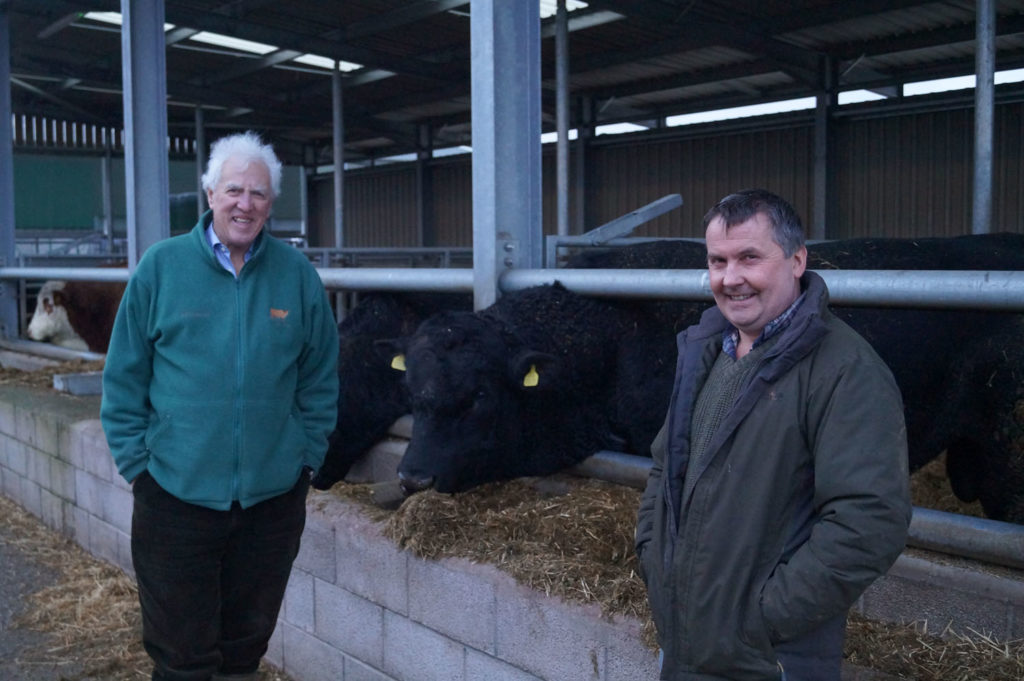
Looking to the future, Alastair has impressive plans for Whitburgh Farms employing the latest technology. The farm has one of the best carbon footprints in the country thanks to solar panels on the cattle sheds and a state of the art woodchip burner to dry the grain, which uses chippings from the estate, saving £40k in oil per year. The drive for self-sufficiency also extends to the cattle. Jim is developing a closed herd of Whitburgh pedigrees and is pleased with their first young bulls. On the arable side, the farm is using satellite mapping to find where the structure of the ground changes, to reduce fertiliser usage, and it is trialling a live bacteria treatment to help soil structure.
Finally, Alastair’s fundamental principle for sustainability is to listen to people who work the land. He said: “Here at Whitburgh Farms we are trying to create evidence for the regulators and come up with something that is sensible and works. If you are just thinking about these things in the heat of an office you cannot comprehend what is happening out in the field. We are working with the GWCT to help people understand what’s realistic in farming and how nature works. The GWCT has always recognised it’s a question of balance and I believe in that strongly.”
This case study is taken from our e-book Working Conservationists, available to download here for just £1.99.
